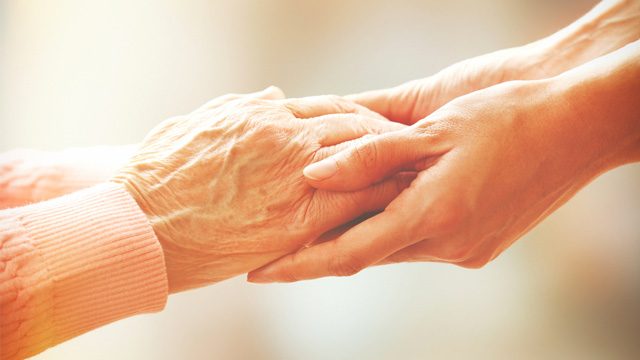SUMMARY
This is AI generated summarization, which may have errors. For context, always refer to the full article.

Do you remember the first time you held hands with someone who seemed romantically promising to you? Did you feel that electrifying tingle that seemed to have been a result of billions of all your nerve endings all biting their fingers waiting for that moment to happen? And when it does, they all connect to send that tingle up your spine and to your brain, making you burst with imagination as to what awaits this romance that finally “touched.”
Touch. The sense that is very difficult for any of us to be without because you cannot strip yourself of touch receptors as you would cover your ears, nose, mouth and eyes if you did not want to sense the world. Touch receptors are all over our skin – the organ that serves as the conduit between our bodies and the world. Without it protecting us, we would cease to be.
But why are some parts of our bodies more sensitive to touch than others? We know from experience that the soles of our feet are sensitive. Our hands too, especially our fingers are very sensitive, as well as our lips and genitals. This is because we have been wired to feel pain in parts of the body that are most crucial to our survival. Feeling pain in these areas right away will alert you to guard against harm being done to you that will threaten your survival.
A scientist named Wilder Penfield in 1950 came up with a caricature of what a human would look like if the size of some major body parts were drawn according to how sensitive they were based on how many touch receptors inhabit it relative to its size. The result of this kind of mapping of “touch sensitivity” is the Penfield homunculus and it is a very useful reminder that even our body parts are not created equal. Nature found it best to calibrate.
But touch is not just about pain. When we are moved by what we sense, we say we are “touched.” This equivalence of touch with feelings has been explored by science, beyond the neurological “caricaturing” of Penfield in the 50’s.
Studies of children in orphanages who have not had the constant assurance by touch turn out to suffer from higher levels of the stress hormone, cortisol, even after their babyhood. They also develop emotional (example, seeks the comfort of strangers) and physical problems (example, gastrointestinal conditions) more than children who were raised by parents. Even premature babies gained more weight and faster when lightly touched and massaged than those who were not as a standard protocol for incubated babies.
And it is not just babies, the elderly who suffer from dementia have lower stress hormone levels and are less agitated when they get “therapeutic touch”. Getting this kind of therapy was also was also found to improve the behavior and cognitive skills of these dementia patients. This is crucial to remember because elderly people are generally left to be on their own, as if there was a quota of human connection that they have already maxed.
I came across a 2006 study which made me realize how touch could really convey emotions without the aid of words or without even seeing whom one was touching. The basic set-up of the experiment was through pairs, where each of the pairs took turns to convey and receive 12 emotions: anger, fear, happiness, sadness, disgust, and surprise, love, gratitude, sympathy, embarrassment, pride, and envy. They did several studies testing for all or some of these different emotions, also varying the gender mix of the pairs.
The findings proved that anger, fear, disgust, love, gratitude, and sympathy could be communicated by touch. This means that the one touching intended to make the one being touched feel those emotions. The said study also showed that, even across some cultures, there are similar touching strategies that are used to convey specific emotions like gentle patting for sympathy and pushing for anger.
But what was most interesting to me were the gender dynamics of communicating with touch. If you think that the genders already have trouble communicating with words, touching does not seem to be the better alternative. When the pair was a mix of a man and a woman, neither of them got what the other one was trying to convey. Another interesting finding was that among all the emotions tested, only anger was communicated “in synch” between a pair consisting of both males. “Happiness” was communicated “successfully” only when the pair consisted of females and “sympathy” could only be conveyed well when one in the binary, was female.
But if you have jumped to the conclusion that the positive effect of touching seems to strictly fall in the female domain, you have to know that science did observe the behavior of sportsmen in basketball and found that touching in support of team members early in the game season correctly predicted better outcomes for teams during the 2008-2009 NBA season. This included chest bumping, high-fives, hugs, huddles.
This is also why I think when malice, abuse and violence inhabits touch, it is not just morally reprehensible but biologically repulsive. If you have been made to become afraid to be touched or held, then you will seek less of what really sustains you. We are born to be with others and feel their skin and live. – Rappler.com
Add a comment
How does this make you feel?
There are no comments yet. Add your comment to start the conversation.